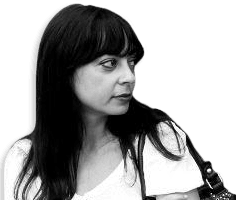After months of silence, Iran's former President Mahmud Ahmadinejad is back, or at least he seems to be trying to make a comeback.
On April 1, Ahmadinejad made a short speech in Khuzestan, at an Iran-Iraq War battlefield site where the country's supreme leader, Ayatollah Ali Khamenei, had spoken just a week ago, and called for resistance against the United States.
"We will find peace only when the flag of the martyrs will be waving atop of the White House," Ahmadinejad was quoted as saying by the hard-line Basij news agency.
In its coverage of Ahmadinejad's comments, the news agency noted that the location of Ahmadinejad's speech was important because of Khamenei's earlier appearance and also the fact that the first "martyrs" of the war with Iraq are buried there.
A day earlier, at a March 31 religious mourning ceremony, Ahmadinejad was seen sitting very close to Khamenei. Only Khamenei's close allies and top officials are usually given such a privilege. There was only one official -- the former head of Iran's judiciary, Hashemi Shahroudi -- sitting between the two men. Pictures of the meeting posted on the leader's website could suggest that despite past differences and a power struggle that resulted in Ahmadinejad, a former protege of Khamenei, falling out of favor, the former president has still a place in the larger circle of the establishment's insiders.
As BBC Persian analyst Hossein Bastani noted, it's highly unlikely that former President Mohammad Khatami would be allowed to sit near the supreme leader in public. Khatami, a reformist, was never considered to be close to Khamenei, who publicly expressed support for Ahmadinejad's anti-Western stances.
Bastani believes that Khamenei could use Ahmadinejad to put pressure on Iran's new government team, which has been accused by hard-liners of giving in to the West and the United States.
The Basij news agency reported that Ahmadinejad's trip to the southern region of Iran was part of his Norouz vacation. His family and Gholamhossein Elham, who acted as government spokesman during Ahmadinejad's first term, accompanied him on the trip.
-- Golnaz Esfandiari
On April 1, Ahmadinejad made a short speech in Khuzestan, at an Iran-Iraq War battlefield site where the country's supreme leader, Ayatollah Ali Khamenei, had spoken just a week ago, and called for resistance against the United States.
"We will find peace only when the flag of the martyrs will be waving atop of the White House," Ahmadinejad was quoted as saying by the hard-line Basij news agency.
In its coverage of Ahmadinejad's comments, the news agency noted that the location of Ahmadinejad's speech was important because of Khamenei's earlier appearance and also the fact that the first "martyrs" of the war with Iraq are buried there.
A day earlier, at a March 31 religious mourning ceremony, Ahmadinejad was seen sitting very close to Khamenei. Only Khamenei's close allies and top officials are usually given such a privilege. There was only one official -- the former head of Iran's judiciary, Hashemi Shahroudi -- sitting between the two men. Pictures of the meeting posted on the leader's website could suggest that despite past differences and a power struggle that resulted in Ahmadinejad, a former protege of Khamenei, falling out of favor, the former president has still a place in the larger circle of the establishment's insiders.
As BBC Persian analyst Hossein Bastani noted, it's highly unlikely that former President Mohammad Khatami would be allowed to sit near the supreme leader in public. Khatami, a reformist, was never considered to be close to Khamenei, who publicly expressed support for Ahmadinejad's anti-Western stances.
Bastani believes that Khamenei could use Ahmadinejad to put pressure on Iran's new government team, which has been accused by hard-liners of giving in to the West and the United States.
The Basij news agency reported that Ahmadinejad's trip to the southern region of Iran was part of his Norouz vacation. His family and Gholamhossein Elham, who acted as government spokesman during Ahmadinejad's first term, accompanied him on the trip.
-- Golnaz Esfandiari





